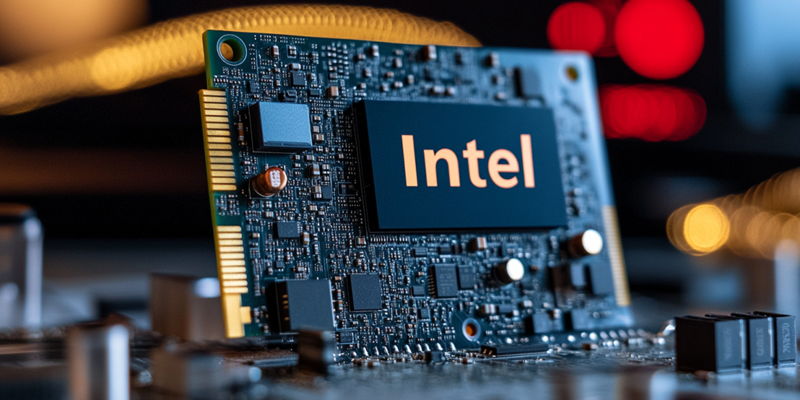The tech world is buzzing with Intel’s announcement of its new Lunar Lake “Core Ultra 7 258V” CPU, which recently showcased impressive performance benchmarks against AMD’s Ryzen Z1 Extreme APU. The Lunar Lake CPU, positioned as a potential game-changer in the mobile computing space, demonstrated a substantial lead in various tests, outperforming the Ryzen Z1 Extreme by a margin of roughly 1.5 to 2 times. The performance differences have ignited discussions about Intel’s strategic direction and its impact on the market. Intel’s new CPU is notably configured with a blend of four performance cores (P-cores) and four efficiency cores (E-cores). Meanwhile, AMD’s Ryzen Z1 Extreme relies on an 8-core/16-thread setup, which has rendered it popular in handheld consoles. This diverse core architecture in Intel’s new processor is crafted to balance power efficiency with enhanced performance, but the performance disparity becomes particularly interesting under different workloads.
Performance Comparison and Market Impact
The Lunar Lake CPU’s remarkable showing in Normal Batch workloads is a standout feature, exhibiting an average of 32% higher performance and peaking at a 49% improvement compared to the Ryzen Z1 Extreme. Such performance metrics have sparked excitement among consumers and industry experts, suggesting a promising future for Intel in the competitive mobile CPU market. However, it’s worth noting that as workload intensity ramps up, the performance gap between Intel’s and AMD’s offerings narrows. Under demanding conditions, the advantage may not be as pronounced, calling for a nuanced interpretation of these benchmark results.
Another crucial factor to examine is the testing environments for these CPUs. Intel’s Lunar Lake was tested with 32 GB of memory, whereas the Ryzen Z1 Extreme’s tests were conducted with just 12 GB. This significant difference in memory environments could skew the benchmark findings, presenting Intel’s CPU in a more favorable light. Furthermore, the Lunar Lake SoC was evaluated in a laptop setting, inherently carrying a more substantial workload compared to the handheld consoles where the Ryzen Z1 Extreme is typically operated, potentially affecting overall performance scores.
Intel’s Strategic Challenge to ARM and AMD
Beyond performance metrics, Intel’s strategy with the Lunar Lake platform is to challenge both ARM-based SoCs and AMD’s offerings in the mobile and low-power device markets. This ambitious goal is part of Intel’s broader vision to reclaim and expand its market leadership. With a keen focus on enhancing power efficiency and delivering top-tier performance, Intel aims to attract a substantial portion of the market dominated by ARM and AMD. The Lunar Lake CPU represents a significant step forward for Intel, catering to the increasing demand for high-performance, power-efficient mobile processors. The platform’s ability to surpass expectations in initial benchmarks reinforces Intel’s commitment to innovation and excellence. Moreover, the competitive nature of mobile computing necessitates continuous advancements, and Intel appears poised to meet this challenge head-on.
The Competitive Landscape and Future Prospects
While Intel’s Lunar Lake CPU demonstrates notable promise, the competitive landscape is far from static. AMD is expected to respond with its upcoming Z2 Extreme and Z2 APUs, rumored to launch in early 2025. These new processors could introduce enhancements that might alter the dynamics of the current benchmark comparisons. Both companies have a history of pushing boundaries, and the forthcoming releases will undoubtedly add another layer of competition. This ongoing rivalry between Intel and AMD, fueled by innovation and a desire to capture market share, ultimately benefits consumers. As each company strives to outdo the other, the market witnesses rapid advancements in technology, offering end-users better-performing and more efficient devices. It remains to be seen whether Intel’s new Lunar Lake CPU can maintain its impressive lead over AMD’s Ryzen Z1 Extreme in the long run. The initial benchmarks are promising, but the true test will be the CPU’s sustained performance and its ability to hold up against future AMD releases.
A Balanced Outlook
Intel’s Lunar Lake CPU has undoubtedly made an impactful entrance, exhibiting superior performance in several benchmark tests compared to AMD’s Ryzen Z1 Extreme APU. However, it’s essential to consider the testing disparities and the potential influence of different memory environments on the results. While the current performance metrics paint a favorable picture for Intel, the evolving market landscape and upcoming releases from AMD will play a critical role in determining the long-term success and market position of the Lunar Lake platform. This developing narrative highlights the importance of continuous innovation and strategic foresight in the tech industry. As Intel and AMD continue to push the envelope, consumers can look forward to more robust and efficient mobile computing solutions. However, it remains uncertain whether Intel’s latest offering can outshine AMD’s Ryzen Z1 Extreme over time.

